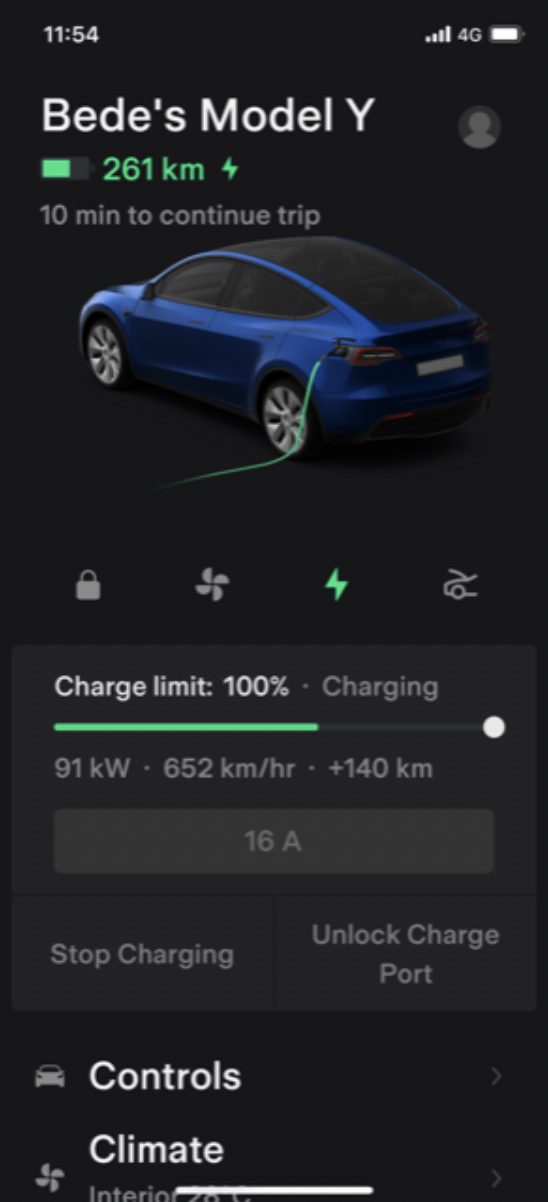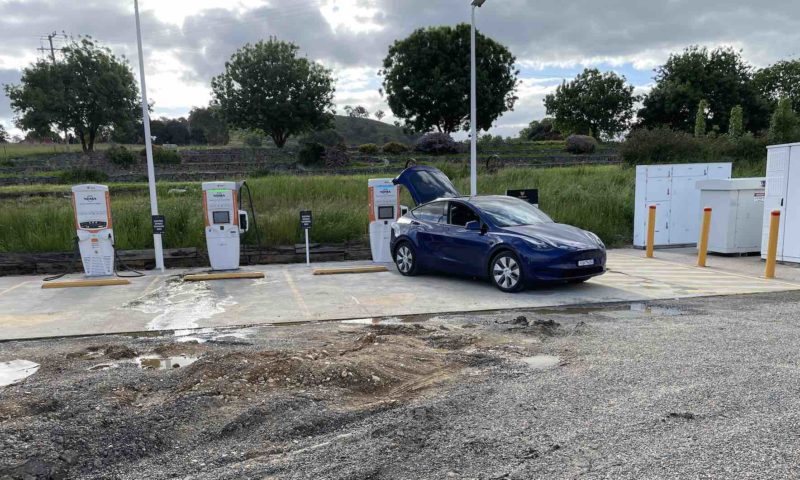The Tesla Model Y is bad for digestion; it charges way too quickly on long trips.
We just did a run from Canberra to Melbourne and back in our new Model Y. It is, for both of us, the most pleasant vehicle we have ever driven, apart from the environmental benefits.
We are a little biased, I suppose, after spending some significant time in it and being EV enthusiasts. But it works for us: The Model Y is easy to slide into, compared to a sedan and the autopilot saves a lot of muscle work in steering which means we felt less tired – travelling 700 km was a breeze.
Problem is, the darn thing charges far too quickly at the highway chargers. It barely leaves enough time to find a loo, eat a sandwich, have a mug of tea and get back to the car before it hits 100% (even though we only needed 70% to comfortably get to the next charger).
Each time, we had to interrupt our picnic, and go move the car when the app told us it was on 100% so that we didn’t block the charger from other would-be customers.
 The culture around this seems really good, interestingly. At the Tesla super-chargers, the strings of six chargers were busy – up to 5 bays of 6 – on the public holiday on the way down, but everyone seemed to be moving their cars as soon as they were full (/-ish), i.e. after 10-15 minutes of charging.
The culture around this seems really good, interestingly. At the Tesla super-chargers, the strings of six chargers were busy – up to 5 bays of 6 – on the public holiday on the way down, but everyone seemed to be moving their cars as soon as they were full (/-ish), i.e. after 10-15 minutes of charging.
The prospect of getting a fee from Tesla of $1 a minute for loitering after 100% may have influenced this public-spirited behaviour of course, but I like to think it was EV-people just being considerate.
From a technical perspective, we were getting about 90kW initially on all the chargers (Tesla and Chargefox) when charging from about 60% due to the BMS protecting the battery. This power dropped off after 80%, slowing rapidly as it approached 100%. (We didn’t need 100%; we just wanted our picnic!)
We had followed the navigation plan that our Y proposed and so, for example, when it suggested stopping at Gundegai for 15 minutes, we accepted and the battery pre-conditioned (cooled) itself in anticipation of reaching the charger.
There was a bit of an issue approaching the NRMA chargers after all the rain but the 6 Tesla chargers were fine. I tried the 350kW NRMA one but only loaded 90kW initially, due to the Tesla BMS.
The Wodonga stop was sensational.
The chargers are at the Council HQ and there is a lovely lawn with picnic tables and the most beautiful, brand new library on site with toilets, exhibitions of history and art, a kitchen, and places to sit in comfort and do library things.
(Not sure what you do for toilets if the library is closed – go to a service station?!. There is also a piano in the square outside and both times that we stopped there, people were playing, and very well!)
We also stopped at Euroa but went with ChargeFox instead of Tesla (deliberately, to give them a whirl) and they were also too quick for us.
Euroa’s Chargefox set-up is right next to the Hume highway in a service station precinct with all the fast-food joints you could want.
On the way back, we much preferred the quieter Tesla location – off the highway, in town – which is next to the river with picnic tables, toilets and safe space to exercise dogs and children, if required. if you need something, shops are about 300m away which is not a bad thing as it gets you a walk for free. Just hurry …
We found the Model Y, with 250 kg of passengers and stuff, travelled on the open road at an average of 140 Wh/km which translates to better than 7 km/kWh. This was quite a surprise as it means that – with no urban regen – we had a useable highway range of better than 420 km on a WLTP-rated range of 450 km.
Before Tesla (BT), in our hybrid, we used to stop once in Wodonga (about halfway to Melbourne) after about four hours driving. With our new EV caution, we stopped every 2 hours. Frankly, we enjoyed the more frequent stops. We arrived in Melbourne as fresh as daisies and this is our new preferred behaviour. Just don’t get indigestion.

Bede Doherty is an independent consultant in climate change mitigation, specialising in transport including fuels/powertrains, fuelling infrastructure and emissions.

